Texergy: Textile-based Harvesting, Storing, and Releasing of Mechanical Energy for Passive On-Body Actuation Abstract Humans instinctively manipulate and “actuate” their clothing, for instance, to adapt to the environment or to modify aesthetics. However, such manual actuation remains in exible and directly tied to user action. We introduce Texergy, a textile-based technical framework that decouples user input and actuated output to make passive on-body actuation interactive […]
Posted: 12/08/2025
Under:
Biomaterials for Prototyping in HCI Abstract While prototyping is a widespread practice among researchers, creating sustainable, functional devices remains challenging due to the limited range of available tools and materials. We present several approaches to sustainable prototyping of functional devices. Our methods range from using bio-based and bio-degradable materials as sustainable alternatives to biologically growing electronic substrates. These methods enable a new class of interactive […]
Posted: 11/08/2025
Under:
Living Layers: Designing Modular E-Skin with Bacterial Cellulose Abstract Due to its flexibility and sensitivity, E-skin is increasingly used in applications in fields such as Human-Computer Interaction (HCI), biomedical engineering, and robotics. However, current e-skin technologies face challenges related to durability, self-healing, and sustainability. Addressing these issues, sustainable materials offer promising alternatives with unique physical properties. In this context, we explore how the inherent characteristics […]
Posted: 11/08/2025
Under:
SoftBioMorph: Fabricating Sustainable Shape-changing Interfaces using Soft Biopolymers Abstract Bio-based and bio-degradable materials have shown promising results for sustainable Human-Computer Interaction (HCI) applications, including shape-changing interfaces. However, the diversity of shape-changing behaviors achievable with these materials remains unclear as the fabrication knowledge is scattered across multiple research fields. This paper introduces SoftBioMorph, a fabrication framework that aims to integrate the fabrication know-how of sustainable soft […]
Posted: 20/06/2024
Under:
Biohybrid Devices: Prototyping Interactive Devices with Growable Materials Abstract Living bio-materials are increasingly used in HCI for fabricating objects by growing. However, how to integrate electronics to make these objects interactive still needs to be clarified. This paper presents an exploration of the fabrication design space of Biohybrid Interactive Devices, a class of interactive devices fabricated by merging electronic components and living organisms. From the […]
Posted: 25/08/2023
Under:
Handheld Tools Unleashed A Mixed-Initiative Physical Sketching with a Robotic Printer Abstract Personal fabrication has mostly focused on handheld tools as embodied extensions of the user, and machines like laser cutters and 3D printers automating parts of the process without intervention. Although interactive digital fabrication has been explored as a middle ground, existing systems have a fixed allocation of user intervention vs. machine autonomy, limiting […]
Posted: 22/01/2023
Under:
SparseIMU: Computational Design of Sparse IMU Layouts for Sensing Fine-Grained Finger Microgestures Abstract Gestural interaction with freehands and while grasping an everyday object enables always-available input. To sense such gestures, minimal instrumentation of the user’s hand is desirable. However, the choice of an effective but minimal IMU layout remains challenging, due to the complexity of the multi-factorial space that comprises diverse finger gestures, objects and […]
Posted: 06/10/2022
Under:
Interactive Bioplastics A DIY approach for composing soft interactive devices from bio-based and bio-degradable materials. Abstract Designers and makers are increasingly interested in leveraging bio-based and bio-degradable “do-it-yourself” (DIY) materials for sustainable prototyping. Their self-produced bioplastics possess compelling properties such as self-adhesion but have so far not been functionalized to create soft interactive devices, due to a lack of DIY techniques for the fabrication of […]
Posted: 18/08/2022
Under:
Print-A-Sketch A Handheld Printer for Physical Sketching of Circuits and Sensors on Everyday Surfaces We present Print-A-Sketch, an open-source handheld printer prototype for sketching circuits and sensors. Print-A-Sketch combines desirable properties from free-hand sketching and functional electronic printing. Manual human control of large strokes is augmented with computer control of fine detail. Shared control of Print-A-Sketch supports sketching interactive interfaces on everyday objects – including […]
Posted: 22/11/2021
Under:
PolySense Augmenting Textiles with Electrical Functionality using In-Situ Polymerization We present a method for enabling arbitrary textiles to sense pressure and deformation: In-situ polymerization supports the integration of piezo-resistive properties at the material level, preserving a textile’s haptic and mechanical characteristics. We demonstrate how to enhance a wide set of fabrics and yarns using only readily available tools. To further support customization by the designer, […]
Posted: 30/07/2020
Under:
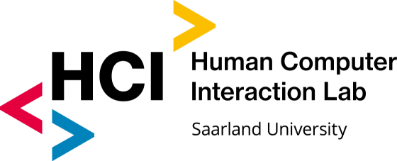

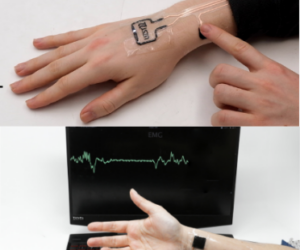
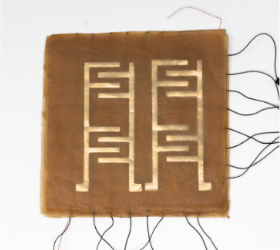
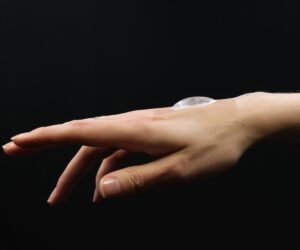
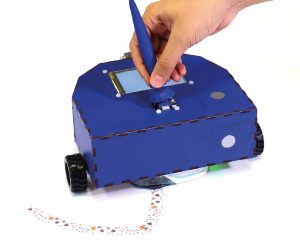
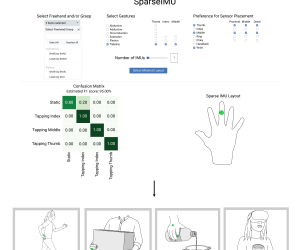
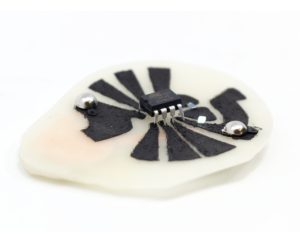
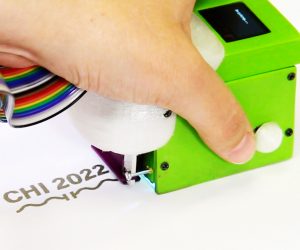
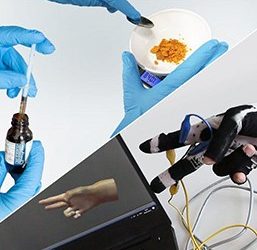

Recent Comments